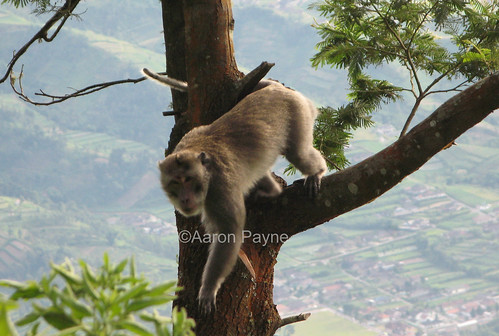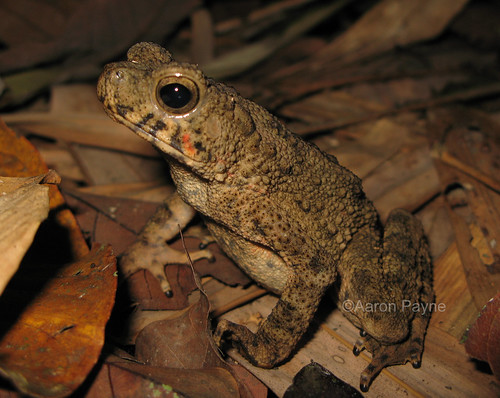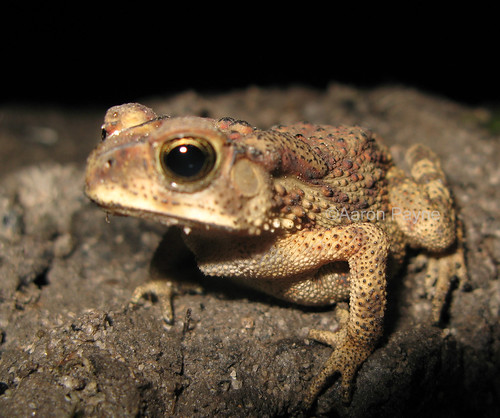froggyboy86
Active Member
Hi guys,
Just thought I would post some pics of the frogs and primates I saw in Indonesia over the past few weeks. I visited the islands of Java and Borneo and did the touristy thing in Bali for a few days.
I was only able to find one frog in Java because it was the dry season and I wasn't able to convince my friends to spend much time outside of the cities at night. The first frog I found was the Grass Frog (Fejervarya limnocharis) in a rice paddy outside Yogyakarta.

The most common primate on the island of Java is the Long-tailed Macaque (Macaca fascicularis).

We left Java and trekked for 2 weeks around Borneo staying in Dayak villages or sailing upstream in traditional boats called kloteks. Our first few days were spent trekking through the Meratus Mountains in South Kalimantan through rainforest which was intersected with rocky streams. In Indonesia toads are a part of the native fauna and are quite common and diverse.
Giant River Toad (Phrynoides juxtasper)

River Toad (Phrynoides asper)

Northern Torrent Frog (Meristogenys orphnocnemis)

Western Torrent Frog (Meristogenys jerboa)

Cricket Frog (Hylarana nicobariensis)

After the hard trek through the rainforest we travelled to the other side of Borneo to the lowlands which proved to be a lot drier and harder to find frogs but there were a lot more primates on display including the famous Bornean Orangutan.
Brown Marsh Frog (Hylarana baramica)

Black-spined Toad (Duttaphrynus melanostictus)

Green Paddy Frog (Hylarana erythraea)

Crab-eating Frog (Fejervarya cancrivora)

The highlight of the trip was seeing wild orangutans and we were lucky to see several adults including females with young.

Another primate which Borneo is well known for is the Proboscis Monkey (Nasalis larvatus) which was common along the rivers in the national park.

However the most endearing monkey was the Agile Gibbon (Hylobates agilis) with its comical facial expressions and its hooting call which would wake us every morning.

Aaron
Just thought I would post some pics of the frogs and primates I saw in Indonesia over the past few weeks. I visited the islands of Java and Borneo and did the touristy thing in Bali for a few days.
I was only able to find one frog in Java because it was the dry season and I wasn't able to convince my friends to spend much time outside of the cities at night. The first frog I found was the Grass Frog (Fejervarya limnocharis) in a rice paddy outside Yogyakarta.

The most common primate on the island of Java is the Long-tailed Macaque (Macaca fascicularis).

We left Java and trekked for 2 weeks around Borneo staying in Dayak villages or sailing upstream in traditional boats called kloteks. Our first few days were spent trekking through the Meratus Mountains in South Kalimantan through rainforest which was intersected with rocky streams. In Indonesia toads are a part of the native fauna and are quite common and diverse.
Giant River Toad (Phrynoides juxtasper)

River Toad (Phrynoides asper)

Northern Torrent Frog (Meristogenys orphnocnemis)

Western Torrent Frog (Meristogenys jerboa)

Cricket Frog (Hylarana nicobariensis)

After the hard trek through the rainforest we travelled to the other side of Borneo to the lowlands which proved to be a lot drier and harder to find frogs but there were a lot more primates on display including the famous Bornean Orangutan.
Brown Marsh Frog (Hylarana baramica)

Black-spined Toad (Duttaphrynus melanostictus)

Green Paddy Frog (Hylarana erythraea)

Crab-eating Frog (Fejervarya cancrivora)

The highlight of the trip was seeing wild orangutans and we were lucky to see several adults including females with young.

Another primate which Borneo is well known for is the Proboscis Monkey (Nasalis larvatus) which was common along the rivers in the national park.

However the most endearing monkey was the Agile Gibbon (Hylobates agilis) with its comical facial expressions and its hooting call which would wake us every morning.

Aaron



